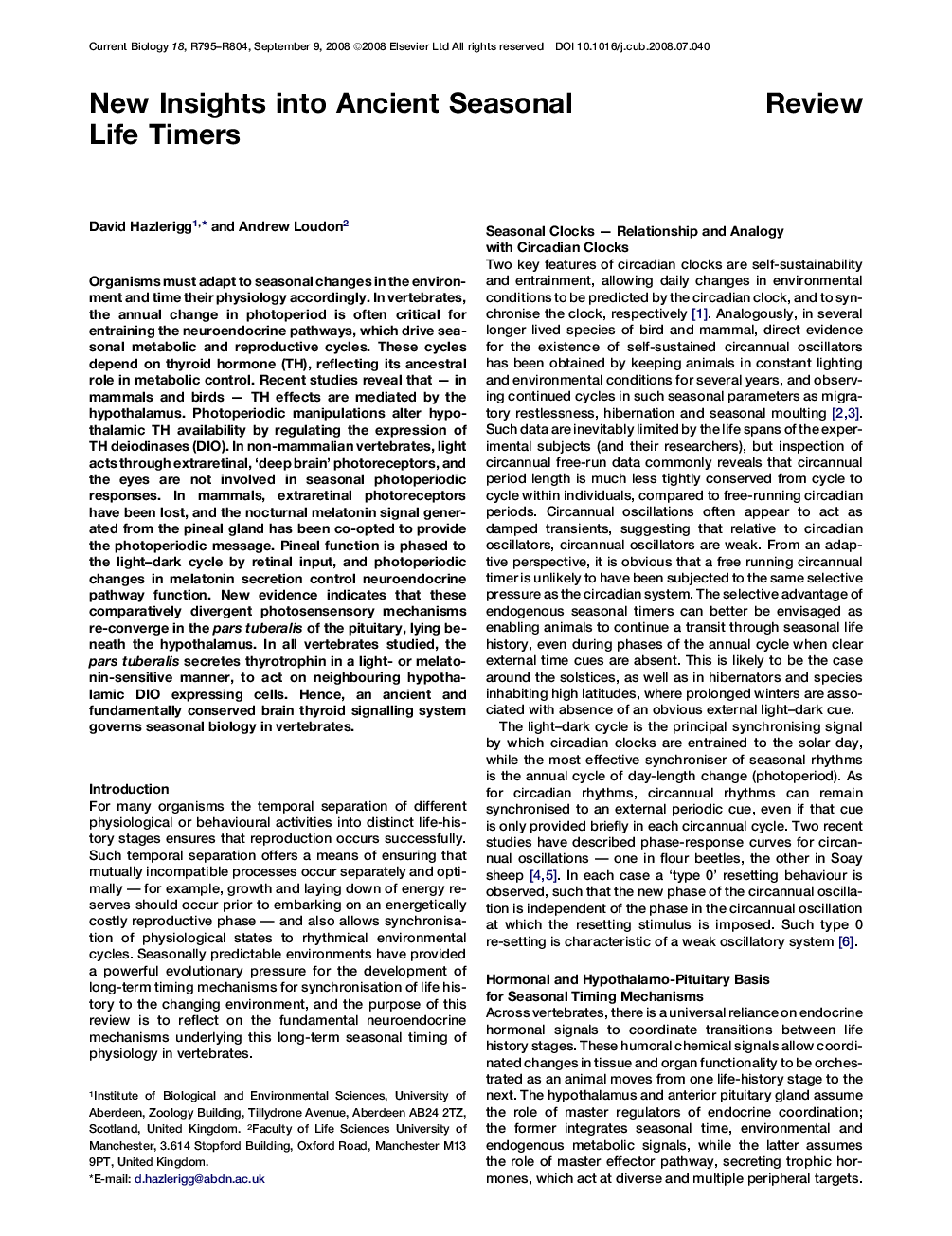| کد مقاله | کد نشریه | سال انتشار | مقاله انگلیسی | نسخه تمام متن |
|---|---|---|---|---|
| 2044433 | 1073422 | 2008 | 10 صفحه PDF | دانلود رایگان |

SummaryOrganisms must adapt to seasonal changes in the environment and time their physiology accordingly. In vertebrates, the annual change in photoperiod is often critical for entraining the neuroendocrine pathways, which drive seasonal metabolic and reproductive cycles. These cycles depend on thyroid hormone (TH), reflecting its ancestral role in metabolic control. Recent studies reveal that — in mammals and birds — TH effects are mediated by the hypothalamus. Photoperiodic manipulations alter hypothalamic TH availability by regulating the expression of TH deiodinases (DIO). In non-mammalian vertebrates, light acts through extraretinal, ‘deep brain’ photoreceptors, and the eyes are not involved in seasonal photoperiodic responses. In mammals, extraretinal photoreceptors have been lost, and the nocturnal melatonin signal generated from the pineal gland has been co-opted to provide the photoperiodic message. Pineal function is phased to the light–dark cycle by retinal input, and photoperiodic changes in melatonin secretion control neuroendocrine pathway function. New evidence indicates that these comparatively divergent photosensensory mechanisms re-converge in the pars tuberalis of the pituitary, lying beneath the hypothalamus. In all vertebrates studied, the pars tuberalis secretes thyrotrophin in a light- or melatonin-sensitive manner, to act on neighbouring hypothalamic DIO expressing cells. Hence, an ancient and fundamentally conserved brain thyroid signalling system governs seasonal biology in vertebrates.
Journal: - Volume 18, Issue 17, 9 September 2008, Pages R795–R804